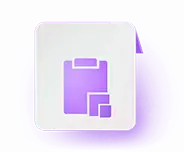HP Board Class 7 Study Material 2025: Are you a curious person who likes to learn new things and who also finds school books boring?...

Himachal Pradesh Board Class 7 Study Material 2025
January 30, 2025
The Goa Board of Secondary and Higher Secondary Education is the main state board of education in the Indian state of Goa. The board is in charge of secondary and higher secondary education at its affiliated institutions. Besides conducting the board exams for Class 10 and Class 12, the board also regulates the Goa Board Class 7 exam.
The Class 7 exam is conducted at the school level by following the guidelines set by the board. The board also prescribes the syllabus and curriculum for the students of Class 7. This article discusses the Goa Board Class 7 exam and other related information such as the syllabus, preparation tips, and many more. Continue reading this article to learn more about the exam and start preparing right away.
The Goa Board of Secondary and Higher Secondary Education (GBSHSE) is in charge of school examinations in Goa. GBSHSE conducts the secondary and upper secondary examinations for the affiliated schools in Goa. In addition to conducting exams, the board has the authority to change the secondary and upper secondary examination curriculum and syllabus.
Some important details regarding the Goa Board Class 7 are given in the table below:
| Features | Details |
|---|---|
| Exam name | Goa Board Secondary School Certificate Examination |
| Short Exam Name | Goa Board Class 7 |
| Conducting Body | Goa Board of Secondary and Higher Secondary Education |
| Frequency of Conduct | Annually |
| Exam Level | Class 7 |
| Mode of Exam | Offline |
| Exam Duration | 2 Hours 30 Minutes |

The Goa Board determines the curriculum and subjects for Class 7. Students have the option of choosing one of the elective language subjects. For Goa Board Class 7, English is a compulsory subject. In addition, students may select one of the following optional language subjects: Hindi, Sanskrit, Foreign Language, or Regional Language. Other subjects include Mathematics, Science, and Social Science. Knowing the syllabus gives them an idea about the chapters covered and what topics to study. Students can refer to the sections below for the subject-wise
The Goa Board Class 7 English syllabus is divided into three sections based on:
The chapters included in the sections are intended to help students improve their English reading and writing skills. The tables below provide the Goa Board Class 7 English syllabus for all sections in detail.
The following is a list of the chapters in the Class 7 English textbook Honeycomb:
| Chapter No. | Chapter Name |
|---|---|
| Chapter 1 | Three Questions |
| Chapter 2 | A Gift of Chappals |
| Chapter 3 | Gopal and the Hilsa Fish |
| Chapter 4 | The Ashes that Made Trees Bloom |
| Chapter 5 | Quality |
| Chapter 6 | Expert Detectives |
| Chapter 7 | The Invention of Vita – Wonk |
| Chapter 8 | Fire Friend and Foe |
| Chapter 9 | A Bicycle in Good Repair |
| Chapter 10 | The Story of Cricket |
The poems in Honeycomb are tabulated below
| Chapter No. | Chapter Name |
|---|---|
| Chapter 1 | The Squirrel |
| Chapter 2 | The Rebel |
| Chapter 3 | The Shed |
| Chapter 4 | Chivvy |
| Chapter 5 | Trees |
| Chapter 6 | Mystery of the Talking Fan |
| Chapter 7 | Dad and the Cat and the Tree |
| Chapter 8 | Meadow Surprises |
| Chapter 9 | Garden Snake |
There are 10 chapters included in this book and the syllabus is given in the table below:
| Chapter No. | Chapter Name |
|---|---|
| Chapter 1 | The Tiny Teacher |
| Chapter 2 | Bringing Up Kari |
| Chapter 3 | The Desert |
| Chapter 4 | The Cop and the Anthem |
| Chapter 5 | Golu Grows A Nose |
| Chapter 6 | I Want Something In The Cage |
| Chapter 7 | Chandni |
| Chapter 8 | The Bear Story |
| Chapter 9 | A Tiger In The House |
| Chapter 10 | An Alien Hand |
Grammar is an important part of the curriculum. The following topics are covered in the English Grammar section of Goa Board Class 7:
| Chapter No. | Chapter Name |
|---|---|
| Chapter 1 |
Determiners |
| Chapter 2 | Linking Words |
| Chapter 3 | Adverbs |
| Chapter 4 | Tense Forms |
| Chapter 5 | Clauses |
| Chapter 6 | Passivisation Adjectives (Comparative and Superlative) |
| Chapter 7 |
Modal Auxiliaries |
| Chapter 8 | Word Order in Sentence Types |
| Chapter 9 | Reported Speech |
Class 7 Maths introduces students to concepts that build the fundamentals for higher classes. Students should be aware of the syllabus to know what chapters to study. They can refer to the Goa Board Class 7 Maths syllabus in the table below and start their preparation immediately:
| Chapter No. | Chapter Name |
|---|---|
| Chapter 1 | Integers |
| Chapter 2 | Fractions and Decimals |
| Chapter 3 | Data Handling |
| Chapter 4 | Simple Equations |
| Chapter 5 | Lines and Angles |
| Chapter 6 | The Triangle and its Properties |
| Chapter 7 | Congruence of Triangles |
| Chapter 8 | Comparing Quantities |
| Chapter 9 | Rational Numbers |
| Chapter 10 | Practical Geometry |
| Chapter 11 | Perimeter and Area |
| Chapter 12 | Algebraic Expressions |
| Chapter 13 | Exponents and Powers |
| Chapter 14 | Symmetry |
| Chapter 15 | Visualising Solid Shapes |
The Goa Board Class 7 Social Science syllabus is divided into three parts, and there are three separate books for Civics, History, and Geography.
Students should give equal focus to all the sections in the subject in order to get a good foundation and also score good marks in the exam. Below, we have provided the detailed syllabus for each of the sections in Goa Board Class 7 Social Science:
The following are the chapters in the Civics section for Goa Board Class 7 Social Science:
| Chapter No. | Chapter Name |
|---|---|
| Chapter 1 | On Equality |
| Chapter 2 | Role of Government in Health |
| Chapter 3 | How the State Government Works |
| Chapter 4 | Growing Up as Boys and Girls |
| Chapter 5 | Women Change the World |
| Chapter 6 | Understanding Media |
| Chapter 7 | Understanding Advertising |
| Chapter 8 | Markets Around Us |
| Chapter 9 | A Shirt in the Market |
The chapters in the History section of Goa Board Class 7 Social Science are as follows:
| Chapter No. | Chapter Name |
|---|---|
| Chapter 1 | Tracing Changes Through a Thousand Years |
| Chapter 2 | New Kings and Kingdoms |
| Chapter 3 | The Delhi Sultans |
| Chapter 4 | The Mughal Empire |
| Chapter 5 | Rulers and Buildings |
| Chapter 6 | Towns, Traders, and Craftspersons |
| Chapter 7 | Tribes, Nomads, and Settled Communities |
| Chapter 8 | Devotional Paths to the Divine |
| Chapter 9 | The Making of Regional Cultures |
| Chapter 10 | Eighteenth-Century Political Formations |
The following chapters are included in the Geography section of Goa Board Class 7 Social Science:
| Chapter No. | Chapter Name |
|---|---|
| Chapter 1 | Environment |
| Chapter 2 | Inside Our Earth |
| Chapter 3 | Our Changing Earth |
| Chapter 4 | Air |
| Chapter 5 | Water |
| Chapter 6 | Natural Vegetation and Wildlife |
| Chapter 7 | Human Environment Settlement, Transport and Communication. |
| Chapter 8 | Human Environment and Interaction – The Tropical and Subtropical Region |
| Chapter 9 | Life in Temperate Grasslands |
| Chapter 10 | Life in the Deserts |
Class 7 Science helps students understand various phenomena of nature, the environment, and many others. Students should thoroughly study all the chapters to get a good grasp of the concepts. They can refer to the table below for the Goa Board Class 7 Science syllabus and have a well-planned study session.
| Chapter No. | Chapter Name |
|
Chapter 1 |
Nutrition in Plants |
|
Chapter 2 |
Nutrition in Animals |
|
Chapter 3 |
Fibre to Fabric |
|
Chapter 4 |
Heat |
|
Chapter 5 |
Acids, Bases, and Salts |
|
Chapter 6 |
Physical and Chemical Changes |
|
Chapter 7 |
Weather, Climate and Adaptation of Animals to Climate |
|
Chapter 8 |
Winds, Storms, and Cyclones |
|
Chapter 9 |
Soil |
|
Chapter 10 |
Respiration in Organisms |
|
Chapter 11 |
Transportation in Animals and Plants |
|
Chapter 12 |
Reproduction in Plants |
|
Chapter 13 |
Motion and Time |
|
Chapter 14 |
Electric Current and Its Effects |
|
Chapter 15 |
Light |
|
Chapter 16 |
Water: A Precious Resource |
|
Chapter 17 |
Forest: Our Lifeline |
|
Chapter 18 |
Waste Water Story |
Hindi is one of the language subjects included in the Goa Board Class 7 curriculum. Students can refer to the syllabus to know all the chapters included in different textbooks that they have. The syllabus is deisgned to help students have good reading and writing abilities in Hindi. Students can refer to the tables below for the detailed Goa Board Class 7 Hindi syllabus:
There are 20 chapters in the textbook Hindi Vasant. Students can find the syllabus in the table below:
| Chapter-1 | हम पंछी उन्मुक्त गगन क |
|---|---|
| Chapter-2 | दादी माँ |
| Chapter-3 | हिमालय की बेटियां |
| Chapter-4 | कठपुतली |
| Chapter-5 | मीठाईवाला |
| Chapter-6 | रक्त और हमारा शरीर |
| Chapter-7 | पापा खो गए |
| Chapter-8 | शाम एक किशान |
| Chapter-9 | चिड़िया की बच्ची |
| Chapter-10 | अपूर्व अनुभव |
| Chapter-11 | रहीम की दोहे |
| Chapter-12 | कंचा |
| Chapter-13 | एक तिनका |
| Chapter-14 | खानपान की बदलती तस्वीर |
| Chapter-15 | नीलकंठ |
| Chapter-16 | भोर और बरखा |
| Chapter-17 | वीर कुवर सिंह |
| Chapter-18 | संघर्ष के कराण मैं तुनुकमिजाज हो गया धनराज |
| Chapter-19 | आश्रम का अनुमानित व्यय |
| Chapter-20 | विप्लव गायन |
The chapters included in the Hindi Durva textbook for Class 7 are tabulated below:
| Chapter-1 | चिड़िया और चुरुंगुन |
|---|---|
| Chapter-2 | सबसे सुंदर लड़की |
| Chapter-3 | मैं हूँ रोबोट |
| Chapter-4 | गुब्बारे पर चीता |
| Chapter-5 | थोड़ी धरती पाऊँ |
| Chapter-6 | गारो |
| Chapter-7 | पुस्तकें जो अमर हैं |
| Chapter-8 | काबुलीवाला |
| Chapter-9 | विश्वेश्वरैया |
| Chapter-10 | हम धरती के लाल |
| Chapter-11 | पोंगल |
| Chapter-12 | शहीद झलकारीबाई |
| Chapter-13 | नृत्यांगना सुधा चंद्रन |
| Chapter-14 | पानी और धूप |
| Chapter-15 | गीत |
The topics that students have to study for the Goa Board Class 7 Hindi Grammar are mentioned in the table below:
| भाषा और व्याकरण | क्रिया |
|---|---|
| वर्ण विचार | काल |
| शब्द विचार | वाच्य |
| वर्तनी | अव्यय |
| संज्ञा | संधि |
| लिंग (संज्ञा के विकार) | समास |
| वचन | उपसर्ग एवं प्रत्यय |
| कारक | वाक्य |
| सर्वनाम | वाक्य अशुद्धियाँ एवं संशोधन |
| विशेषण | विराम-चिह्न |

Students appearing for any exam should have a strategy to ensure that they study effectively and score good marks as well. Following a detailed study plan and some tips help students maximise their learning and finish everything on time. To help them we have created some preparation tips and a study plan that they can implement. Read on to know more about them and kickstart the exam preparation:
The preparation tips ensure that students are studying in a smart way. Following them can hone their preparation and increase their chances of scoring good marks in the exam. Below, we have provided some of the preparation tips for Goa Board Class 7:
A detailed study plan allows students to give equal focus on all the subjects so that they can score good marks in all. Following the plan can help them study systematically and complete the syllabus on time. Students can refer to the Goa Board Class 7 study plan below to ace their exam:
Languages: You must work on three things to prepare for languages:
Mathematics: Mathematics is a lot of fun, when you have a hang of it. However, some kids approach mathematics as a task rather than a pleasurable activity. When you’re stuck, seek assistance from your teachers and friends. Make it a pleasure, not a chore.
Social studies: In most cases, social studies consists of only two things: facts or a narrative. This approach to social studies goes a long way., as it helps you recall things better. Rather than studying for an exam, learn it for personal growth.
Science: All those pesky equations and formulas aren’t a big problem if you’re familiar with Science. To accomplish this, keep your concepts clear and read your textbooks regularly.
The following are the frequently asked questions with answers about the Goa Board Class 7 exams:
Q: Where can I get details about the Goa Board Class 7 exam?
Ans: Students can find the details about the Goa Board Class 7 exam on this page.
Q: Where can I practice questions for the Goa Board Class 7 exam?
Ans: Students can practice questions on Embibe for the Goa Board Class 7 exam.
Q: What is the significance of the Goa Board class 7 syllabus?
Ans: The Goa Board Class 7 syllabus lays a strong foundation for students to succeed in higher grades. The syllabus is designed to ensure that students have a thorough understanding of the concepts.
Q: How can students start preparing for the Goa Board class 7 exams?
Ans: Students must begin their preparation early and study consistently. They can refer to 3D videos, practice questions, and take tests on Embibe for intensive exam preparation.
Q: Where can I take mock tests for the Goa Board Class 7 Science exam?
Ans: Students can take mock tests on Embibe for the Goa Board Class 7 Science exam.

There are various schools affiliated with the board that offers secondary and higher secondary education to students. Choosing the right schools helps students enhance their skills and potentials. The list of schools affiliated with the Goa Board are as follows:
| S.No. | School Name and Location |
|---|---|
| 1 | G.M.S. Hutatma Manohar Pednekar |
| 2 | G.M.S. Hasapur |
| 3 | Hutatma Bapu Gawas Memorial Govt. High School |
| 4 | Lokshikshan High School |
| 5 | Harmal Panchakroshi High School |
| 6 | St. Anne’s Middle School |
| 7 | G.M.S. Khorlim |
| 8 | G.M.S. Mapusa |
| 9 | G.M.S. Tivim |
| 10 | Govt. High School, Namoshi, Guirim |
| 11 | Govt. High School, Alto Betim |
| 12 | G.M.S. Assonora |
| 13 | Govt. High School, Pandora |
| 14 | Green Meadows School |
| 15 | Jnyan Vikas High School |

Students can prepare for the following list of competitive exams. These exams are helpful to boost students’ intellectual skills and thinking capacity. Besides that it also helps them think out of the box and be better in their day to day lives: